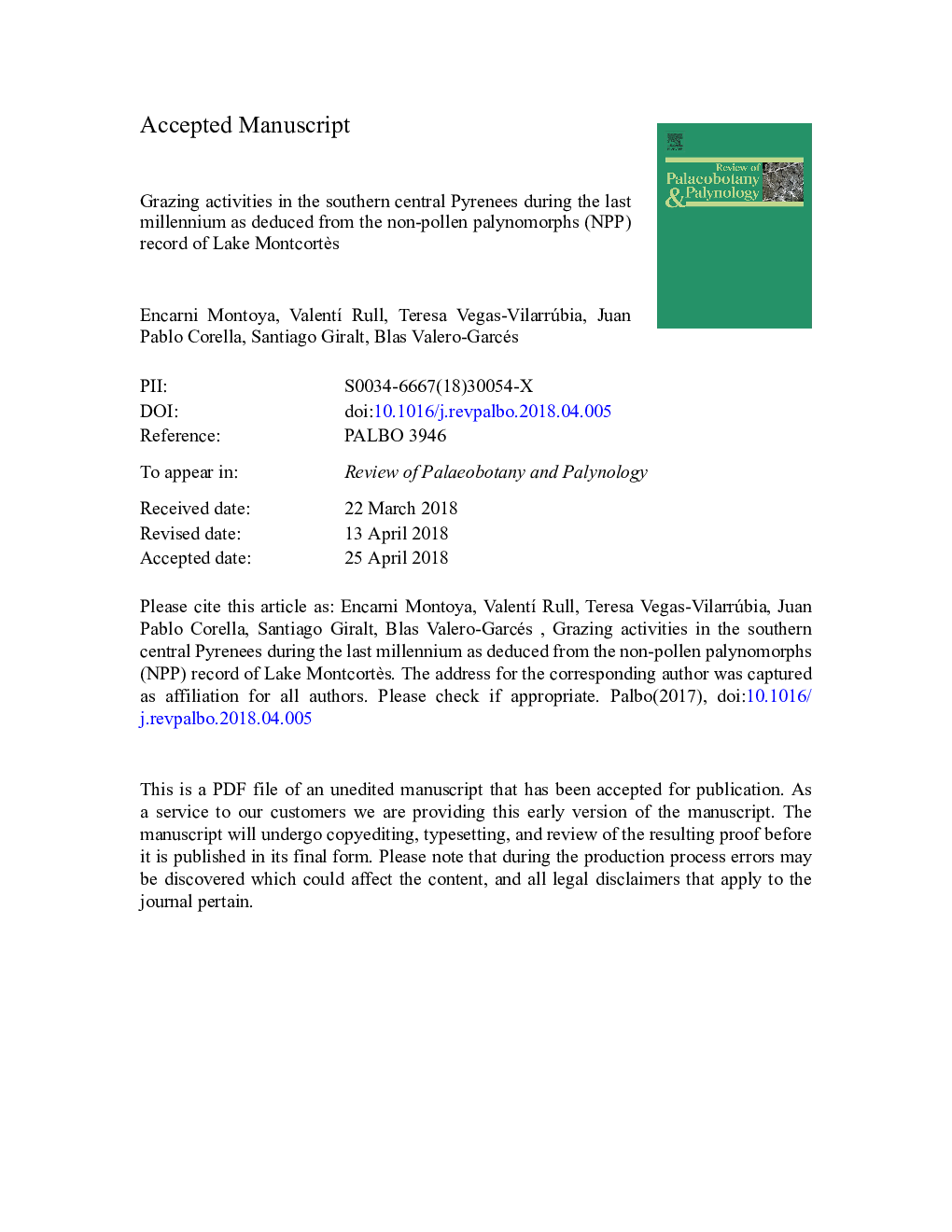| Article ID | Journal | Published Year | Pages | File Type |
|---|---|---|---|---|
| 8916612 | Review of Palaeobotany and Palynology | 2018 | 43 Pages |
Abstract
Human activities during the last millennium have shaped most of the present-day landscapes. During this time, in the southern central Pyrenees several climate periods and phases of variable human disturbance have driven varied landscape responses. In previous studies of the sediment deposits in Lake Montcortès (southern central Pyrenees) several climatic shifts (including the Medieval Climate Anomaly and the Little Ice Age), as well as forest clearance by fire, agriculture and cattle raising as the main human impacts were recorded since Medieval times. In this work we use non-pollen palynomorphs (NPP) on the same sequence to reconstruct the different human activities, with a special focus on grazing, at an average resolution of around 30â¯years per sample. Independent NPP proxies for fire and forest clearance were found, supporting former studies. Moreover, the NPP record shows four periods of high abundance of coprophilous fungi: 1) 830-865â¯CE; 2) 1120-1290â¯CE; 3) 1530-1795â¯CE; and 4) 1865-1880â¯CE. These four periods correspond to phases of increased livestock farming, as reported in historical documents. Comparison of pollen, historical documents, and NPP records show that the impact on landscape dynamics during the last millennium have been mostly related to variable human population density controlled by historical, political and cultural changes in the Pyrenean mountains. Moreover, the use and comparison of several independent proxies have highlighted the strength of the indicator value obtained.
Related Topics
Physical Sciences and Engineering
Earth and Planetary Sciences
Palaeontology
Authors
Encarni Montoya, Valentà Rull, Teresa Vegas-Vilarrúbia, Juan Pablo Corella, Santiago Giralt, Blas Valero-Garcés,
